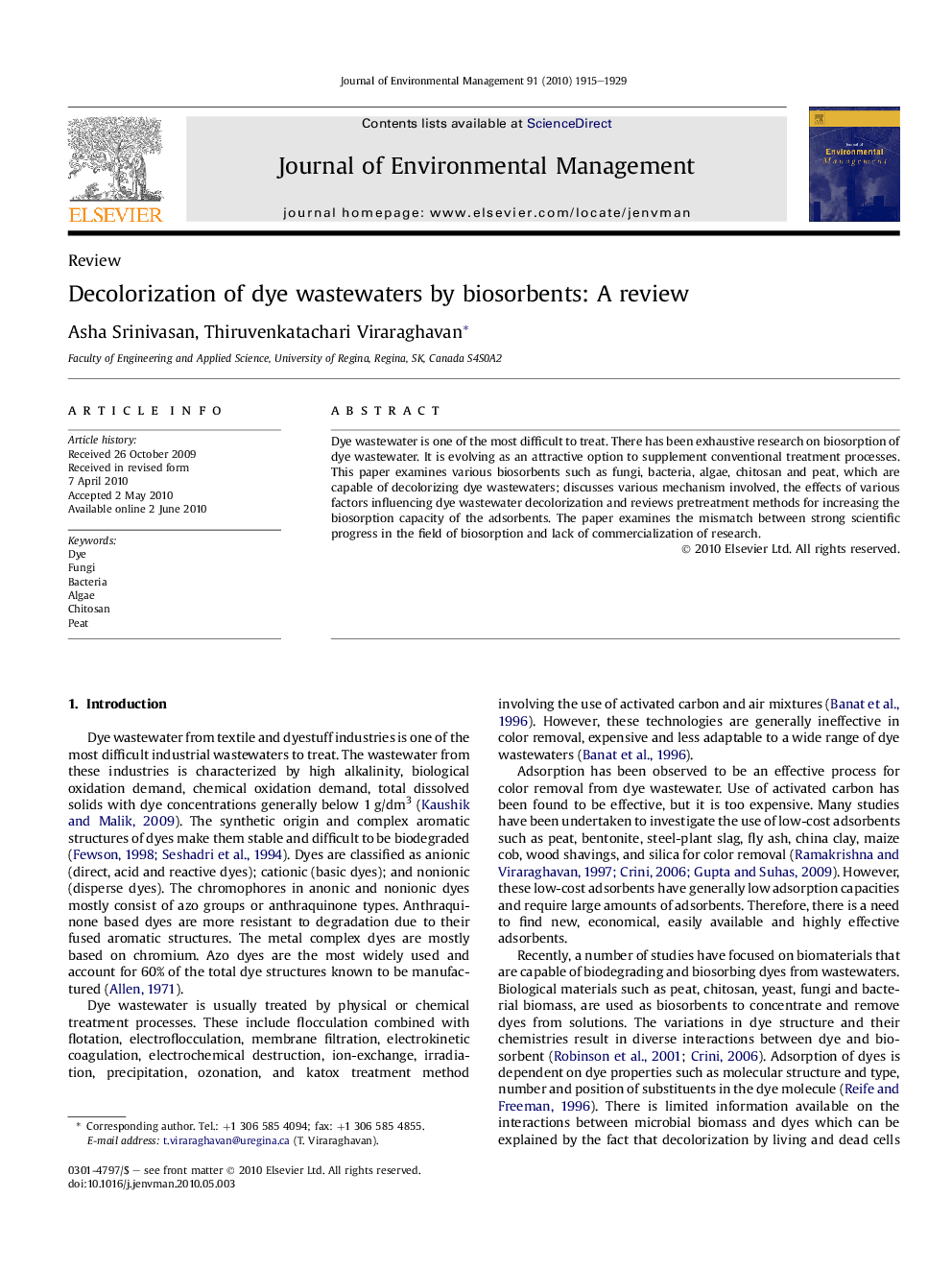| Article ID | Journal | Published Year | Pages | File Type |
|---|---|---|---|---|
| 1057336 | Journal of Environmental Management | 2010 | 15 Pages |
Abstract
Dye wastewater is one of the most difficult to treat. There has been exhaustive research on biosorption of dye wastewater. It is evolving as an attractive option to supplement conventional treatment processes. This paper examines various biosorbents such as fungi, bacteria, algae, chitosan and peat, which are capable of decolorizing dye wastewaters; discusses various mechanism involved, the effects of various factors influencing dye wastewater decolorization and reviews pretreatment methods for increasing the biosorption capacity of the adsorbents. The paper examines the mismatch between strong scientific progress in the field of biosorption and lack of commercialization of research.
Related Topics
Physical Sciences and Engineering
Energy
Renewable Energy, Sustainability and the Environment
Authors
Asha Srinivasan, Thiruvenkatachari Viraraghavan,
